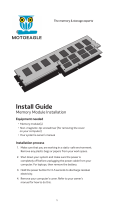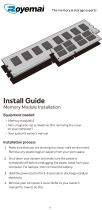
4 Computer Setup (F10) Utility, BIOS Settings ............................................................................................. 32
Computer Setup (F10) Utilities ........................................................................................................... 32
Using Computer Setup (F10) Utilities ................................................................................ 33
Computer Setup—File ....................................................................................................... 33
Computer Setup—Storage ................................................................................................ 34
Computer Setup—Security ................................................................................................ 36
Computer Setup—Power ................................................................................................... 40
Computer Setup—Advanced ............................................................................................. 41
Recovering the Configuration Settings ............................................................................................... 42
Changing BIOS Settings from the REPSETUP utility ......................................................................... 43
5 Diagnostics and Troubleshooting ............................................................................................................... 46
LEDs ................................................................................................................................................... 46
Wake-on LAN ..................................................................................................................................... 47
Power-On Sequence .......................................................................................................................... 47
Resetting the Administrator and power-on passwords ....................................................................... 48
Power-On Diagnostic Tests ................................................................................................................ 48
Interpreting POST Diagnostic Front Panel LEDs and Audible Codes ................................................ 49
POST Numeric Codes and Text Messages ....................................................................................... 51
Troubleshooting .................................................................................................................................. 53
Basic Troubleshooting ....................................................................................................... 53
Diskless (No-Flash) Unit Troubleshooting ......................................................................... 54
6 Restoring the Flash Image ........................................................................................................................... 56
System Requirements ........................................................................................................................ 56
Getting Started ................................................................................................................................... 56
Formatting a USB Flash Drive ............................................................................................................ 57
Unpacking the Image and Tools for Deployment ............................................................................... 57
Deploying with PXE ............................................................................................................................ 57
Appendix A Specifications .............................................................................................................................. 58
Appendix B Adding an Image Restore Tool .................................................................................................. 61
Appendix C Configuring a PXE Server .......................................................................................................... 62
Prerequisites ...................................................................................................................................... 62
Installing Remote Installation Services (RIS PXE Server) ................................................................. 62
Authorizing Remote Installation Services (RIS PXE Server) .............................................................. 63
Configuring Remote Installation Services .......................................................................................... 63
Set User Permissions on the Active Directory Server ........................................................................ 63
vi





















